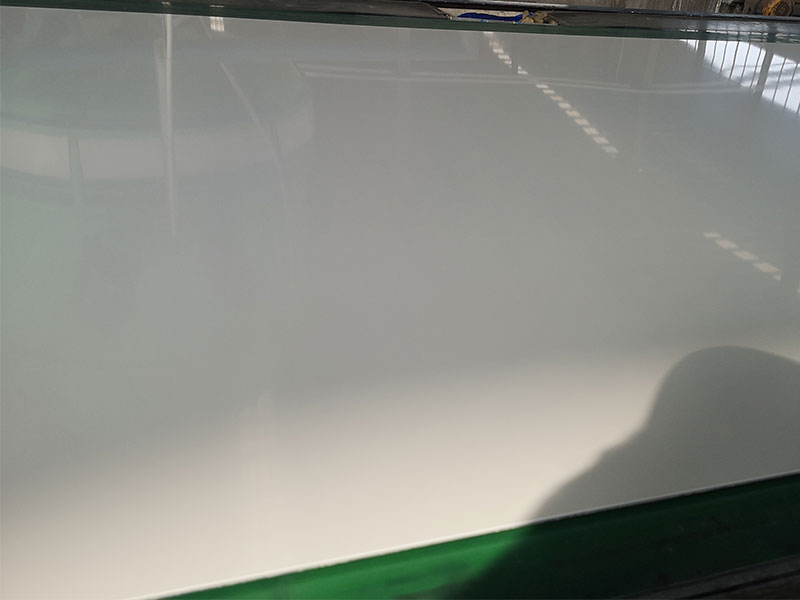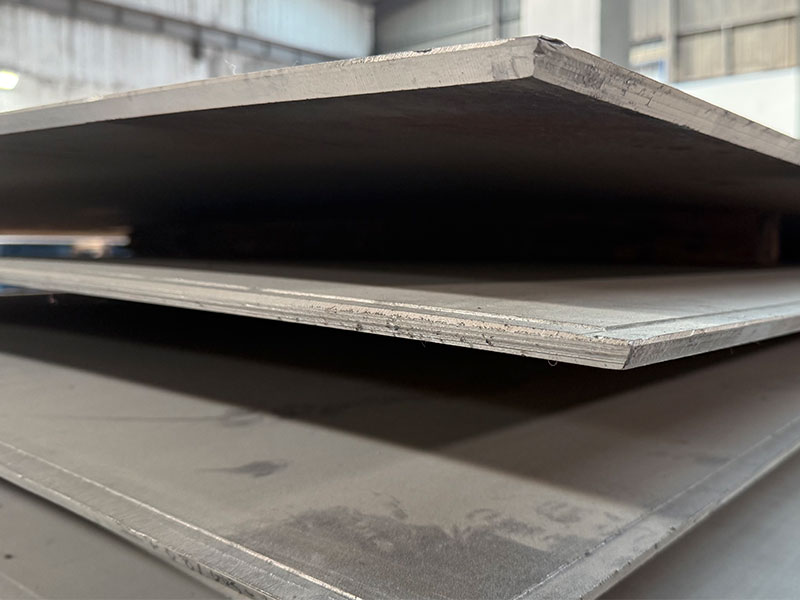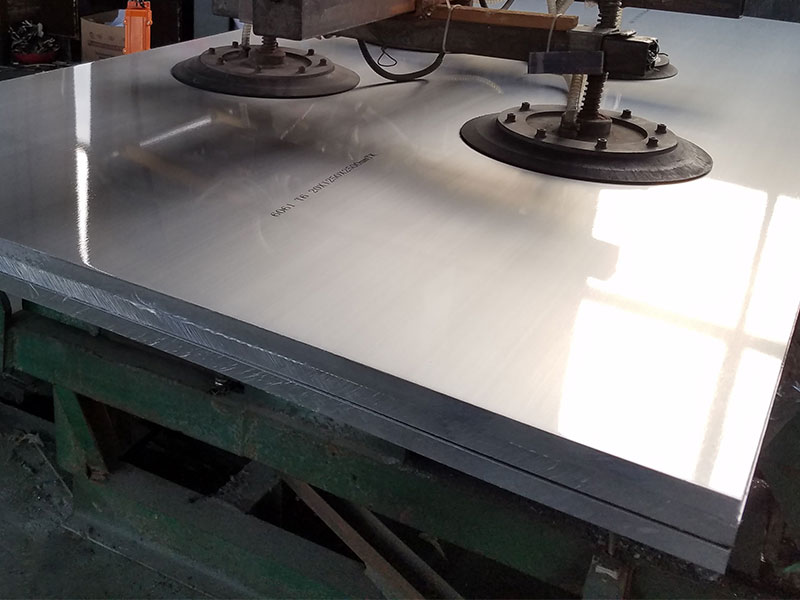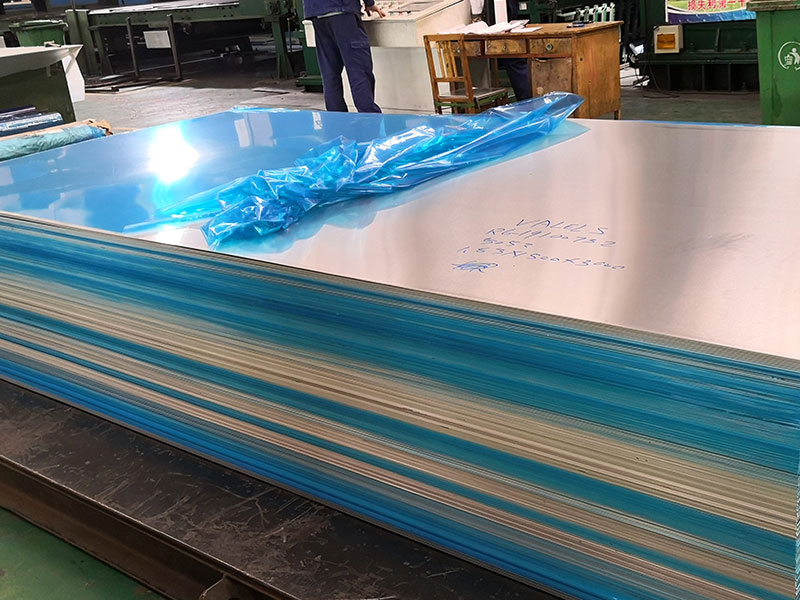Marine grade aluminium alloy plate 5083 h116 with dnv certification
Marine grade aluminium alloy plate 5083 H116 with DNV certification is a high-strength, corrosion-resistant aluminum alloy plate specifically tailored for shipbuilding and offshore applications. It combines excellent seawater corrosion resistance, superior weldability, and high fatigue strength with a DNV-approved manufacturing/control process. Typical uses include hulls, superstructures, decks, offshore platforms, and other marine/ship components where safety, longevity, and reduced weight are critical.
Introduction
Aluminium alloy 5083 is one of the most widely used marine aluminium grades. When produced and tempered to H116 and accompanied by DNV (Det Norske Veritas) certification, this plate becomes a trusted material for commercial and naval vessels, and offshore structures. H116 temper indicates the alloy has been strain-hardened and partially annealed to provide improved toughness and a level of proof strength appropriate for marine applications. DNV certification confirms compliance with maritime industry standards and quality assurance criteria required by classification societies.
Features
- Excellent corrosion resistance to seawater and marine atmospheres.
- High tensile strength and superior fatigue performance compared with common marine alloys.
- Good weldability using common welding processes (GMAW/MIG, GTAW/TIG, and resistance welding); post-weld mechanical properties remain favorable.
- High ductility and toughness, especially at low temperatures.
- Lower weight compared to steel — reduces vessel weight and improves fuel efficiency.
- DNV certification ensures traceability, quality control, and conformity to marine class rules.
- Suitable for both new builds and repair/retrofit work on ships and offshore structures.
Primary Applications
- Ship hulls (commercial, naval, offshore support vessels)
- Superstructures and decks
- Rigid inflatable boats (RIBs) and smaller aluminium vessels
- Offshore platforms, walkways, and topside structures
- Buoyancy chambers and pontoons
- Corrosion-resistant structural members and stiffened panels
- Cryogenic and low-temperature marine equipment (where specified)
Chemical Composition (wt%)
| Element | Typical Range (%) |
|---|---|
| Aluminum (Al) | Balance |
| Magnesium (Mg) | 4.0 – 4.9 |
| Manganese (Mn) | 0.4 – 1.0 |
| Chromium (Cr) | 0.05 – 0.25 |
| Iron (Fe) | ≤ 0.4 |
| Silicon (Si) | ≤ 0.4 |
| Copper (Cu) | ≤ 0.4 |
| Zinc (Zn) | ≤ 0.25 |
| Titanium (Ti) | ≤ 0.15 |
| Other (each) | ≤ 0.05 |
| Other (total) | ≤ 0.15 |
Note: Values above reflect typical chemistry for 5083 per widely accepted standards (e.g., EN 573 / ASTM specifications). Exact composition may vary slightly by manufacturer and customer-specified limits.
Mechanical Properties (Typical) — Temper H116
| Property | Typical Value |
|---|---|
| Tensile strength (Rm) | 305 – 350 MPa |
| Yield strength (Rp0.2) | ≥ 215 MPa |
| Elongation (A, 50 mm) | ≥ 10 – 12% |
| Hardness (Vickers HV) | ~80 – 95 HV |
| Fatigue strength (approx., 10^7 cycles) | ~80 – 120 MPa (dependent on geometry & surface finish) |
| Density | 2.66 g/cm³ |
| Modulus of Elasticity | 69 GPa |
Temper Definition and Processing Notes
- H116 is a temper specially defined for marine applications. It indicates the material has undergone strain hardening and stabilizing treatment to provide improved mechanical performance and resistance to cracking after welding.
- Plates supplied in H116 temper are often stabilized by a low-temperature anneal or by natural aging to achieve a specific balance of strength and ductility.
- Welding may lower local strength in heat-affected zones; proper welding controls and DNV-accepted welding procedures should be used. Post-weld treatments or faying surface preparation are recommended where required.
Physical & Thermal Properties
| Property | Value |
|---|---|
| Melting range | 590 – 640 °C |
| Thermal conductivity (20 °C) | ~121 W/m·K |
| Electrical resistivity (20 °C) | ~0.047 x10^-6 Ω·m |
| Thermal expansion (20–100 °C) | 23.6 µm/m·K |
Production Standards & Certification
- Common standards: EN AW-5083 (EN 573 / EN 755 series), ASTM B209/B928 (for plates and sheets), ISO 6361 (for rolled plates).
- DNV certification: Usually provided in the form of material certificates and manufacturer approvals affirming compliance with DNV rules for classification, including traceability of chemical/physical tests, factory QC, heat treatment records, and welding procedure qualifications.
- Typical documentation: EN 10204 3.1 / 3.2 material certificates, mill test reports (MTR), DNV approval letter, welding procedure specifications (WPS), and non-destructive testing (NDT) records if applicable.
Dimensional Range & Supply Forms
| Form | Typical Thickness Range | Typical Width | Typical Length |
|---|---|---|---|
| Plate | 3 mm – 200 mm (depending on mill) | up to 2.5 – 4.0 m | up to 12 m+ (cut to length) |
| Sheet | 0.5 mm – 6 mm | up to 2.5 m | cut to length/coils (where available) |
| Plate (heavy) | 80 mm – 200 mm | limited widths depending on mill | mill dependent |
Manufacturing capabilities vary—confirm availability with supplier. Thicknesses above ~80–100 mm may be limited and require specialized rolling/forging equipment.
Welding, Fabrication & Surface Treatment
- Welding: GMAW (MIG), GTAW (TIG), and submerged arc welding are commonly used. Use compatible filler metals (e.g., ER5356) recommended for 5xxx series alloys to maintain corrosion resistance and mechanical properties. Follow DNV-approved WPS and pre/post-weld inspection.
- Forming: Good cold formability; bending radius guidelines should follow manufacturer recommendations to avoid cracking. Warm forming may be used for tight radius work.
- Machining: Standard machining practices apply — use sharp tools, control cutting speeds to avoid work hardening.
- Surface treatments: Anodizing, chromate conversion coatings, and protective paints (marine primers/topcoats) are common. Surface cleaning and degreasing prior to coating improves adhesion. For best corrosion control, apply coatings per marine coating system specifications.
Quality Control & Testing
Typical QC tests performed by mills and required for DNV certification:
- Chemical analysis (spectrometry)
- Mechanical testing: tensile tests in longitudinal and transverse directions
- Hardness testing
- Ultrasonic or radiographic inspection for internal defects (on thicker plates)
- Eddy current/surface crack detection where specified
- Flattening and dimensional inspection
- Salt spray tests are sometimes performed for coated samples (not a substitute for real seawater exposure tests)
Advantages vs. Other Marine Alloys
- Compared to 5086: 5083 typically offers slightly higher strength and similar corrosion resistance.
- Compared to 6061: 5083 has superior corrosion resistance in seawater and better weldability without significant loss of mechanical properties after welding; 6061 is heat-treatable and may have higher strength in certain tempers but is not typically preferred for heavy marine structural use.
- Compared to steel: Much lighter, non-ferrous (no rust), and simpler corrosion management (coatings vs. cathodic protection), but has lower absolute stiffness and may require different joining techniques.
Handling, Storage & Safety
- Store flat and supported to prevent bowing or bending.
- Avoid prolonged contact with ferrous materials to reduce risk of galvanic corrosion.
- Protect from excessive dirt/oil prior to surface finishing; keep in dry, covered storage.
- Follow standard EHS precautions for aluminium dust during machining and for welding fumes.
Ordering & Traceability Tips
- Specify grade (5083), temper (H116), required thickness, dimensions, and surface finish.
- Request DNV certification and EN 10204 3.1/3.2 certificates if needed.
- Confirm welding filler metal and WPS compatibility with project specifications.
- For classed vessels, indicate the classification society and any additional documentation required (e.g., mill approval, NDT records).
Related Products
Marine 5383 aluminum plate
The 5383 aluminum alloy belongs to the 5xxx series of aluminum-magnesium alloys known for remarkable resistance to marine corrosion and high strength.
View DetailsMarine 5086 aluminum plate
5086 Aluminum Plate belongs to the 5xxx series of aluminum-magnesium alloys. Its hallmark is a high magnesium content—generally between 4.0% and 4.9%—which delivers enhanced corrosion resistance, particularly against saltwater and marine atmospheric conditions.
View DetailsMarine aluminum steel clad plate
Aluminum / Steel Clad Plates consist of a sandwich construction in which a layer of marine-grade aluminum alloy is metallurgically bonded to a steel substrate.
View DetailsMarine heavy duty aluminum plate
Marine Heavy Duty Aluminum Plates Sheets generally refer to thick aluminum alloy plates and heavy gauge sheets produced from marine-grade alloys such as 5083, 5086, 5059, and 5383.
View DetailsMarine 5059 aluminum plate
Marine 5059 Aluminum Plate is distinguished by its high magnesium content and carefully balanced alloying elements, designed to maximize strength without compromising corrosion resistance.
View DetailsMarine 5083 aluminum plate
Marine 5083 Aluminum Plate belongs to the 5xxx series of aluminum-magnesium alloys and is classified as a non-heat-treatable alloy. Its high magnesium content (typically 4.0–4.9%) enhances its corrosion resistance, especially against seawater-related degradation such as pitting and stress corrosion cracking.
View DetailsRelated Blog
5083 H116 marine grade aluminum alloy sheet plate
Superior corrosion resistance and high strength of 5083 H116 marine grade aluminum alloy sheet plate. Ideal for shipbuilding and marine structures, this alloy ensures durability in harsh sea conditions with excellent weldability and excellent workability.
View DetailsMarine 5083 5086 H116 Checkered Aluminum Plate for Deck Board
Premium Marine 5083/5086 H116 Checkered Aluminum Plate designed for deck boards. Boasting exceptional corrosion resistance, high strength, and durability, it meets marine industry standards for optimal performance in harsh sea environments.
View Details5083 0.5mm aluminum plate sheet for marine
5083 0.5mm aluminum plate sheet is a thin, high-strength marine-grade alloy offering excellent corrosion resistance, good weldability, and superior formability. Ideal for shipbuilding, boat decking, marine fittings, and coastal structures.
View DetailsMarine Grade Plate Aluminum Sheet 5083 O H116
When it comes to marine construction and offshore applications, selecting the right material is crucial. Marine Grade Aluminum Plate 5083 O H116 stands out as a top-tier solution, blending excellent mechanical properties, corrosion resistance.
View DetailsHot Rol 5052 5083 Aluminum Plate Sheet for Boat
When it comes to marine aluminum, hot rolled 5052 and 5083 aluminum plate sheets hold a distinguished place, primarily due to their impeccable blend of strength, corrosion resistance, and formability — factors crucial for boat manufacturing.
View Details3mm 5083 Marine Grade Aluminum Plate For Ship building
In the demanding world of shipbuilding, materials that combine strength, durability, and corrosion resistance are essential to construct vessels that can withstand harsh marine environments.
View Details













Leave a Message